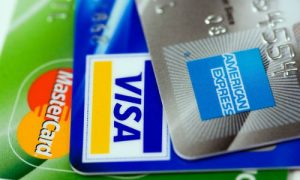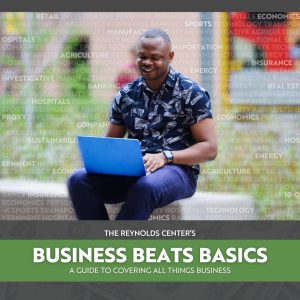Articles Based on New Accounting Standards
When the Financial Accounting Standards Board revises a standard, which they have been doing frequently, numerous potential business article topics result. Interest in FASB-standard-related business articles is often widespread because many new standards impact almost all business entities and a wide audience of business professionals. Let’s explore the new lease standard and highlight potential topics reporters could explore.
Lease Accounting, Continued
Our previous article focused on an acknowledged shortcoming with current accounting processes for operating leases. Namely, operating leases allow entities to use assets to generate income without having to record either the operating lease asset or the operating lease liability on their balance sheets. With this accounting, analyzing an entity’s financial position becomes difficult because the balance sheet doesn’t convey the straightforward economic reality that entities are using the assets they lease and owe payments on them. The new lease standard addresses this shortcoming.
To begin generating article topics, you’ll want to understand features of current and future lease accounting requirements. The best sources from which to learn about any new standards and related implementation issues include the “big four” CPA firms. They expend substantial resources to summarize, compare and highlight implementation issues surrounding new standards. Webcasts, surveys of financial statement preparers or users, etc. are common. For this article, I have relied primarily on PwC’s Leases 2016 guide. Testament to the complexity of the new lease standard, this guide runs around 300 pages. You can find other guides at PwC’s website and other large CPA firms. Initially the complexity of new lease accounting feels daunting, but it does generate numerous, intriguing potential articles.
Lease Accounting is Changing
The core principle in the new lease standard is that lessees should record assets and liabilities from operating lease contracts on their balance sheets. In contrast with current operating lease accounting, the new perspective is that signing a lease contract obligates a lessee to make lease payments, a liability, and affords the right to use an asset. It is the right of use that is recorded as a leased asset, not the underlying asset itself.
Numerous potential articles could stem from the change in operating lease accounting. How large are companies’ operating lease assets and liabilities (that were previously unrecorded)? How many hours of work are entities incurring to meet the new standard? By some accounts, this may be substantial for many entities.
Also, debt contracts typically include covenants that restrict the amount of debt that an entity can have. Will entities violate these debt covenants because the new standard requires entities to record a previously unrecorded liability? If so, are debt lenders willing to re-negotiate these covenants? If not, then what? Is the new lease accounting standard causing entities to change how they operate or how they negotiate new leases?
The Bright-Line Rule and Other Article Ideas
Recall from our prior lease article that current lease accounting includes several bright-line implementation rules. Negotiating lease contracts to stay just within the bright-line rules allows entities to take advantage of operating lease accounting by not recording leased assets or liabilities. Will the new accounting standard require enough disclosure so that investors can (finally) determine whether entities have purposely taken advantage of the current bright-line rules to utilize operating lease accounting? If so, which entities and to what extent?
The new lease standard will require extensive footnote disclosure with the goal of providing investors with meaningful information about the amounts and timing of lease-related cash flows as well as the judgments inherent in lease accounting. Reporters could explore interesting article topics about new footnote information from both preparers’ and users’ perspectives. Given the extensive footnote disclosure, internal control systems will need modifying to make sure appropriate lease-related information is gathered and summarized, again offering potential article topics.
Much of the complexity with the new standard surrounds a broadened definition of a leased asset, which offers numerous possible article topics. To meet the definition of a lease, a contract must explicitly or implicitly identify an asset that is physically distinct. As the PwC publication documents, this means that if an entity contracts to use a portion of a pipeline shared with other users, no physically distinct asset (and thus no leased asset) may exist. But if the entity contracts for a segment of the pipeline, then a leased asset exists. Simply deciding whether an agreement is, or includes, a leased asset will likely be expensive, time-consuming and perhaps fraught with errors (implying interesting article topics).
Other examples highlight the potential difficulty to identify a lease. As the PwC document illustrates, if a hospital purchases services from a vendor and the service contract entitles the hospital to use medical equipment the vendor provides as part of the service arrangement, the vendor may now classify the equipment as a lease (albeit well disguised). Entities that have cloud computing service agreements may have embedded leases for the computing hardware the cloud data storage provider owns and maintains. Some preparers have voiced concerns that acquiring necessary lease information from outside vendors will be difficult or impossible. Are entities encountering this problem?
More Complexities with the New Lease Standard
The complexity with the new lease standard doesn’t end with the definition of a leased asset. Once a lessee identifies an asset, to be a lease contract subject to lease accounting, a lessee must then control the use of the asset. This means the lessee has the right to substantially all the economic benefits from using the asset, including the right to direct its use. For example, if an entity leases a condominium for the month of December for a five-year period, then the entity has a lease for the five-year period but only for one month each year. However, if the lease is for any one month period each year for five years it may not be a lease. Given this level of complexity and judgment implementing the new standard, an interesting article would assess whether lessees with identical lease contracts end up accounting for the lease contracts differently.
This example highlights the difficulty in assessing whether a lessee controls the use of an asset: Suppose a manufacturer purchases customized parts from a supplier and the supplier uses a customized machine. The manufacturer must consider whether it is leasing the customized machine (the supplier owns). But then if the supplier sells parts to the manufacturer exclusively, and sells scrap metal from the custom machine to a third party, the manufacturer must consider the benefits of selling scrap and the benefits it receives in order to assess whether it receives all the benefits from the customized machine the supplier owns. The level of judgment and cooperation with other entities appears somewhat daunting for entities, which may make for interesting article topics.
The PwC 2016 Lease Guide cited at the start of this article highlights many more examples and implementation challenges from the new lease standard including how to separate lease and non-lease components in a contract (e.g. when a contract provides a leased asset and also a service), applying the new standard to sale and leaseback transactions, and accounting for leveraged leases (eliminated under the new standard but grandfathered).
One strategy to generate interesting accounting-standard-related articles is using the accounting standard guides and related information the larger accounting firms provide. Since nearly every entity and many business professionals are affected by this and other new standards, articles based on accounting standards may find large audiences.











